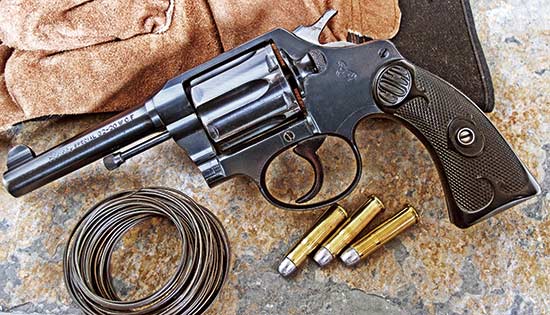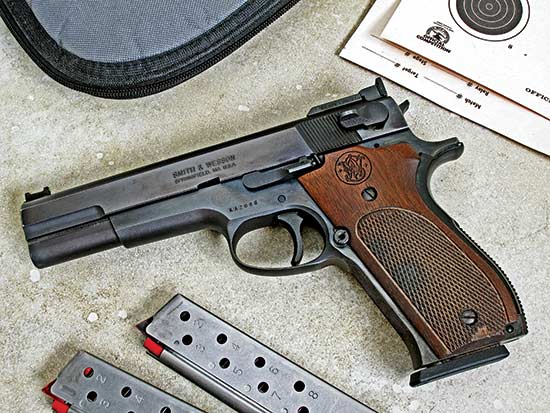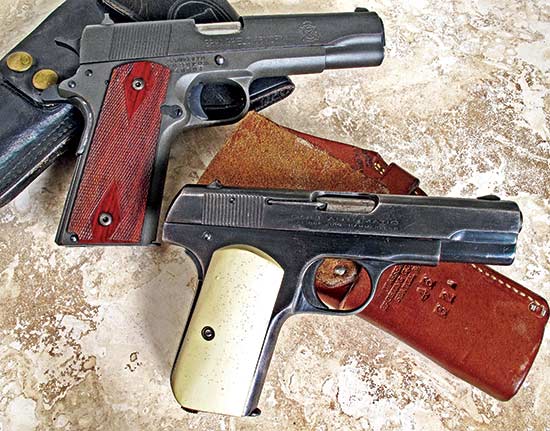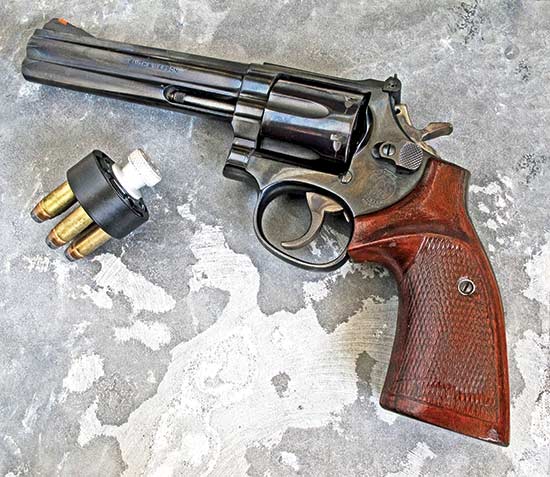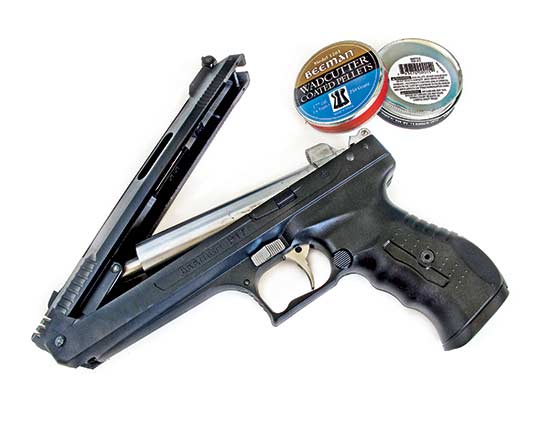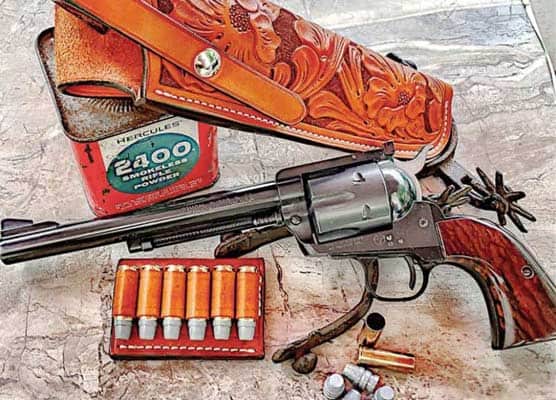More Ways To Play: Non-Rimfire Fun-Guns
What About Those "Other" Fun-Guns?
When his Editorship asked me to write a piece about guns that are fun to shoot, cost effective and light recoiling, but weren’t .22 caliber, I had to blink a few times. For a guy who shoots about three rounds of .22 for every centerfire round, the premise was almost akin to Roy saying, “Hey: Write me an article about hand-held tools that drive nails, but let’s not make it about hammers.” I’ll state my own bias that .22’s are the fun’nest and best’est guns in the world, and I believe everyone should have one. Or nine.
For this reason, I had a bit of big-boy thinking to do when I asked myself, “So why don’t more people own .22-caliber firearms?” I came to realize there’s no shortage of acceptable reasons. Lots of folks are operating on tight budgets and can’t afford the expense of another handgun. Others might reasonably expect any of their handguns to serve a variety of roles — including self-defense — and here rimfires come up short. There’s also practicality: Reloaders might prefer to “roll their own” with available powder and components rather than go the rimfire route for cheap thrills.
There’s also the problems associated with the diminutive rounds themselves, which are still out of stock in a lot of areas where hoarders still walk the earth. And, when they’re in stock, they’re a lot more expensive than they were even six years ago, since the rimfire drought had the secondary effect of showing how much consumers are really willing to pay for a brick.
All that said, my biggest “a-ha” moment was realizing shooting as a pastime comes down to having a fun, emotional connection with one’s firearm. You know: Shooting to move the soul and spirit. Shooting to put a smile on your face. If a .22 feels like a toy and the experience is disappointing, then why bother leaving the house? If we all decided to shoot purely on the basis of cost and with a minimum of felt recoil, you’d be reading a magazine called American Airgunner.
With that said, there’s a lot of options out there ticking a number of similar boxes a rimfire will, but might be a lot more up your alley.
.38 Your .357
If you forced me into some doomsday scenario where I had to throw all of my guns into a river save for one, I would hold onto my Smith & Wesson 586. With full-house .357 Mag. loads, it’d be hard to feel undergunned, but with moderate-velocity .38 Spl. loads I can shoot as pleasurably as possible. A full-sized revolver is going to give you unmatched versatility, extreme ease of use, and probably the most accurate handgun shooting of your life.
The key is any .357 Mag. revolver is by definition overbuilt for the shorter, less powerful .38 cartridge, which will chamber and fire perfectly fine with absolutely no degree of danger. With more mass to soak up the recoil of the .38, the gun leads to just plain easier shooting.
But here’s the thing: most medium-frame .357 revolvers are not too big, which makes them easy to lift and point. They’re also compatible with a huge number of hand sizes, making them great for introducing children or partners to the shooting sports without feeling like you’ve had to buy a toy. And as an additional plus, .38 Spl. ammunition is available just about everywhere on the planet.
Little Big Man
How about a big 9mm? Well not too big, but a full-sized, steel-framed 9mm with a barrel length of more than 4″ is a beautiful addition to one’s collection of shooting irons. For the same reasons why .357 revolvers are forgiving guns to the new shooter, the big nines similarly excel: lots of mass for a relatively mild round. In comparison to revolvers, they give up some ground in terms of flexibility of grip modification and you have to contend with some additional mechanical complexity. However, since they’re not limited to six rounds before a reload, many find them to be more capable self-defense tools. Additionally, 9mm ammo is even cheaper and more plentiful than .38 special. Pluses, minuses, et cetera.
Some of my absolute most pleasurable shooting has come from my S&W 952. With a 5″ barrel surrounded by a steel slide and a steel frame, the gun simply doesn’t move much in the hand. You can shoot 300 rounds at a time with absolutely no discomfort or fatigue — other than to your wallet, perhaps.
Now, do you need to spend nearly two grand on a 9mm target pistol like this? Absolutely not. A Beretta 92, Sig 226, Browning Hi-Power or 1911 in 9mm would all be stellar choices for an accurate and easy-to-shoot handgun which can still be comfortably carried, if that’s your thing.
Pint-Sized Fun
A little bit of research into this article led a relatively young guy like me to pick up a Colt Police Positive in .32-20. I think I’m now a believer in the caliber, and I think my Colt would make for a great “Kit Gun.” Like a .22, it’s small and handy, and would be easy to tote around. A 115-gr. .32-20 has a bit more oomph than your garden variety .22, yet generates extremely mild recoil and still tends to be pretty flat shooting. While firing .38 Spl. through a J-Frame can be a bit fatiguing after a while, shooting the Police Positive is an extremely comfortable proposition.
I think handgunners would be similarly well-served with a revolver in .32 H&R Mag. or .327 Federal, as you’d have the opportunity of running fairly capable ammo when it counts, but could shoot pipsqueak .32 S&W rounds through the gun to train new shooters — or just for grins and giggles. Granted, the cost of any factory .32-caliber round is going to be a little bit pricey in comparison to .22, but it’s another piece of data proving rimfires don’t have a monopoly on fun or practicality.
The Right .380
You’ll notice I said the right .380. I’ve shot enough itty-bitty, straight-blowback autos to leave the web of my hand stinging. However, if we’re talking about small, practical, fun-to-shoot guns, there are enough well-designed guns in .380 ACP I’d be remiss not to mention them. Two in particular warrant a name drop. The first is the Colt Model M (alternatively, the 1908 hammerless). As a companion to one’s 1911, this little brother is still easy-shooting thanks to a hefty steel frame and slide, and it fits smaller hands wonderfully. It’s also available in .32 ACP.
I also like Beretta’s “Cheetah” line, consisting of the models 84, 85 and 86. These are a godsend for small hands, and I find them easy-kicking and straight-up fun to shoot. I think any would be tremendously cool options simply to have as an “understudy” for Mama Bear or Baby Bear if Papa Bear happens to own a Beretta 92. Papa Bears, you know who you are.
What’s Your Choice?
If you don’t like rimfires, I can finally say I get it. Speaking personally, if I close my eyes and think “gun,” I’m just as likely to envision a High Standard .22 as I am a Desert Eagle. But for you, maybe not, and that’s fine. Life’s too short to shoot anything you don’t love, and there’s a lot outside of the realm of .22’s successfully competing in the areas of being fun, small, easy-to-shoot, versatile and/or affordable. For whatever reason you choose not to drink from the cup of rimfire, don’t feel the least bit guilty. There’s enough out there to meet your needs.
For more info: www.americanhandgunner.com/index

